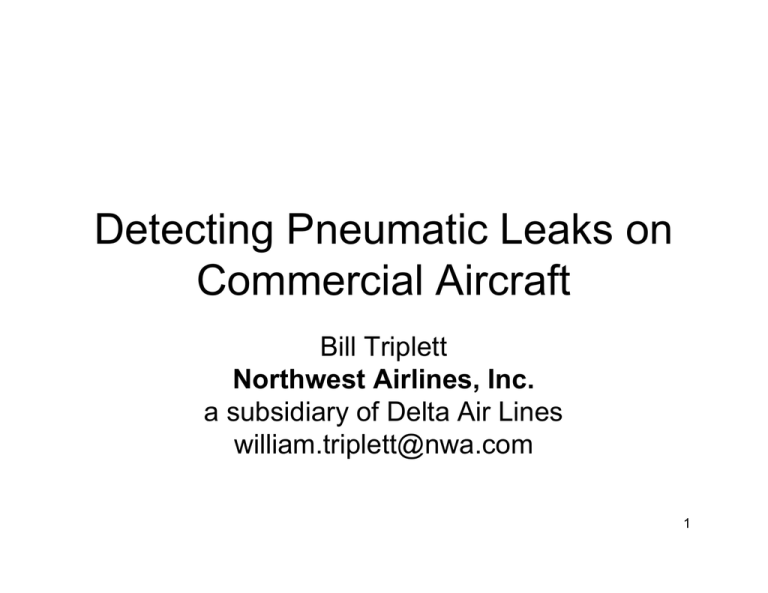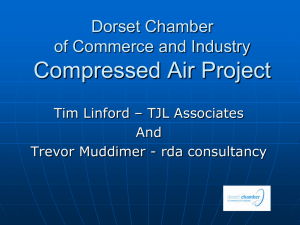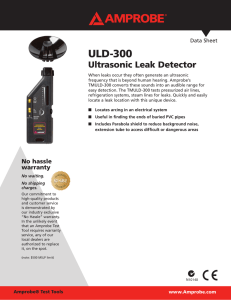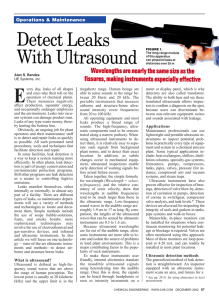Detecting Pneumatic Leaks on Commercial Aircraft
advertisement

Detecting Pneumatic Leaks on Commercial Aircraft Bill Triplett Northwest Airlines, Inc. a subsidiary of Delta Air Lines william.triplett@nwa.com 1 Overview • Aircraft pneumatic systems – A quick aircraft system lesson to understand the environment and challenges. • Additional methods used • How we are using Ultrasonic Leak detection • Ultrasonic Leak detection challenges 2 Pneumatic powered systems • • • • Pressurization Anti-ice heat source for wings, tail etc. Air conditioning Redundant systems 3 Where Pneumatic pressure comes from 4 Pneumatic Bleed System 5 6 • Air conditioning system 7 8 9 10 Areas that are pressurized 11 Problems caused by leaks • System performance – Cooling – Pressurization • Efficiency (fuel burn) – Bleed air is “typically” potential thrust • Flight deck indications – If system requirements are not met indication light notifies crew. • Pressure sensors • Temperature sensors 12 Search for a better method • We needed a better method to find leaks before they can impact the system. • Leakage is normal at some locations. • Maintenance program is tightly controlled – Changes go through technical groups – FAA approved 13 Other Aircraft are similar 14 Other methods of detection leaks on ground • • • • • By hand Foil Tell-tell stick Developer Temp Tabs 15 16 Methods tested • Thermal Imagining • Hand held temp probe • Ultrasonic Leak detection 17 Temp probe Fluke 80PK-24 Fluke 51 18 Thermal image of Ducts 19 20 Ultrasonic Leak Detection in progress using Tele-bend 21 How we are using Ultrasonic Leak Detection • Troubleshooting known/unknown problems. – Find smaller leaks. – Small leaks may be future problem. • At an existing maintenance program interval, replace hand method for improved results. • Ability to scan an area quickly aids troubleshooting. • Find it. Fix it. 22 Limitations / Challenges • Large laminar leaks due not have a large ultrasonic sound signature. Ultrasonic's may miss these if it is the sole means of detection. Common sense and other methods are still needed. • Technician adoption – some are slow to fully adopt. Prior company usage strictly for O2 leaks created some paradigms. • Hearing - Some have complained that their hearing deficiencies limit the ability to hear leakage sound. • Its still a tool! Good training and procedures, and technique is required. 23 Questions? 24 Acknowledgements Alex Melton Manager Non Destructive Testing alex.melton@nwa.com 25 Thank you 26





